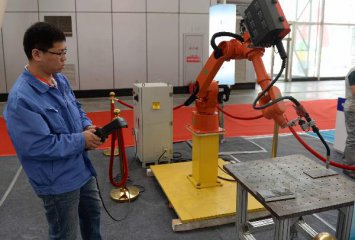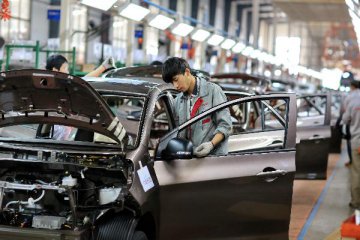
China's manufacturing sector posted a slight drop in June, official data showed on Friday, suggesting there remains downward pressure on the world's second-largest economy.
The purchasing managers' index (PMI) came in at 50 in June, slightly lower than May's 50.1. It was the lowest reading since March's 50.2, according to the National Bureau of Statistics (NBS) and the China Federation of Logistics and Purchasing.
A reading above 50 indicates expansion, while a reading below 50 reflects contraction.
The sub-index measuring production stood at 52.5, marking the second consecutive expansion. The sub-index for new orders settled at 50.5, 0.2 percentage points lower than the previous month but remaining in expansion territory for a fourth month, indicating steady market demand.
NBS statistician Zhao Qinghe said, in general, the manufacturing sector is steady and its structures are improved. High-tech manufacturing picked up remarkably while industries with excess capacity contracted. The sub-index for high-tech manufacturing was 51.3, 0.5 percentage points higher than that recorded in May. The sub-index for sectors with high energy consumption fell 0.9 percentage points to 48.2, the second consecutive monthly decline. The sub-index for new orders for export shed for the third month in a row to 49.6; the index for new orders for import lost 0.5 percentage points to 49.1, staying in contraction territory for a third straight month.
Zhao attributed the sagging trade index to the weak global economy, expectations of a U.S. interest rate hike and protectionist policies in Western countries.
On Friday, June's Caixin General China Manufacturing PMI, an indicator of factory activity based on a private survey, dropped to 48.6 from 49.2 in May. The June figure was the lowest since January, when the PMI dipped to 48.4, and marked the 16th consecutive month of contraction, according to the Caixin report.
Caixin attributed the decline to sluggish demand at home and abroad.
"Against the backdrop of a turbulent external environment, and in order to avert a sharp economic decline, the government must strengthen its proactive fiscal policy while continuing to follow prudent monetary policy," said Zhong Zhengsheng, director of Macroeconomic Analysis at CEBM Group, a subsidiary of Caixin Insight Group.
China's GDP expanded 6.7 percent in the first quarter, the slowest reading since the global financial crisis in early 2009. Authorities have predicted that China's economy will follow an L-shaped path as downward pressures weigh and new growth momentum has yet to pick up. While the manufacturing sector slowed, the service sector expanded faster in June, presenting a new growth engine for the economy.
NBS data showed that the index for services grew 0.6 percentage points to 53.7.






















Latest comments